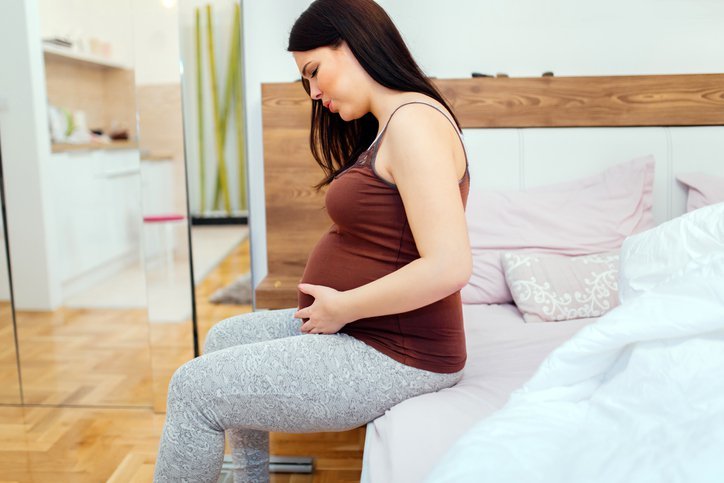Contents:
Medical Video: How to recognize the signs of labor - Early labor signs
Not a few pregnant women who are fooled to rush to the hospital think the time has come for childbirth, only to be told by the doctor that the contraction is just deception. This false contraction is known as Braxton Hicks contraction.
Braxton Hicks contractions are the way your body prepares to welcome the baby's birthday, but not all women can experience false contractions. And in some cases, real contractions that feel strong and more regular can even arise without warning.
Here's how to tell which fake contractions and which ones indicate you really have to go to the hospital.
Fake contraction signs (Braxton Hicks)
Some women describe Braxton Hicks contractions as tightness in the stomach that comes and goes. Many women say that this fake contraction feels like mild stomach cramps. Discomfort from contractions centered on the lower abdomen, but does not trigger the process of opening the uterus.
You may not need to panic and even relax a little at home if you experience symptoms of false contractions like the one below:
- Frequency and pattern are random; does not last long, does not get worse, does not get more frequent, but can be painful or not at all (for example the distance between contractions 10 minutes, 6 minutes, 2 minutes, then 8 minutes)
- Contractions can stop once you change positions or switch to another activity
- Does not show any blood spots
- Amniotic water does not break
You may experience this false contraction during the third trimester or even the second trimester. But keep in mind that not all women experience false labor, and when in doubt, always contact an obstetrician or midwife. Sometimes the only way to know for sure is to undergo a vaginal examination. The doctor can check whether your cervix has changed and prepare for labor.
If the doctor ensures that this is not the time, you can relieve the pain that may arise from fake contractions with a warm bath or massage. Or, take a short walk out of the house to get rid of this fake contraction. If you are an active pregnant woman, it's okay to rest because your body is preparing for your baby's birth. Be sure to always drink plenty of fluids.
READ ALSO: Various Causes of Early Rupture of Amniotic fluid
Signs of genuine labor contractions
The experience of pre-natal contractions can be different for each woman, and may also be different in each pregnancy. To find out if the contractions you feel are the real thing and you will give birth, see the following guidelines.
- Real labor contractions are initially irregular, similar to false contractions. But over time, your contractions begin to show patterns, distances, and fixed frequencies, and increasingly feel long. Contractions come periodically, for example every five or seven minutes, and each takes about 30-70 seconds. Check contractions You use a watch or stopwatch, note when and how long each contraction lasts
- Real contractions will continue to beat even if you change position, sleep, or move - it may feel more intense over time
- Labor contractions cause persistent back pain around your stomach, along with pressure in the pelvis. Some women may also feel pain to the waist and thighs. Some women describe contractions as strong menstrual cramps, while others describe their contractions as strong waves that feel like diarrhea cramps.
- The occurrence of thinning and widening of the cervix (effacement)
- Bloodstains arise. A day or two before the contraction starts, you may see pink mucus or vaginal discharge with blood. These blood spots are actually mucus plugs that seal the cervix during pregnancy. Not all women are aware of these patches, and some women can start contracting before the mucus plug is released.
- Rupture of membranes. If you have regular contractions and your amniotic fluid breaks, you will most likely give birth in the near future.
READ ALSO: Doesn't Want Vagina Tear When Giving Birth? Try Perineum Massage
But even after experiencing signs of labor, you cannot be absolutely sure if you really are going to give birth. Some women experience painful contractions every day with no changes in the cervix, while other women may feel only a little pressure and back pain.
Don't hesitate to call your doctor or midwife when you are hit by a dilemma. The doctor / midwife should be available at all times to answer questions and discuss your concerns about whether or not your contractions are true signs of labor. You can wait for a contract at home and see the progress, unless your health team suggests otherwise.
Contact your doctor or midwife immediately, if you experience:
- Severe vaginal bleeding
- Continuous fluid leakage, or if your amniotic fluid breaks
- Very strong contractions every 5 minutes for 1 hour
- Contractions that do not subside when carried on the road
- Changes in baby movements that you are very aware of, or if you feel less than 10 movements per 2 hours
- Symptoms of any real labor contraction if your pregnancy is not 37 weeks old
READ ALSO: 5 Alternative Childbirth Methods You Can Try












